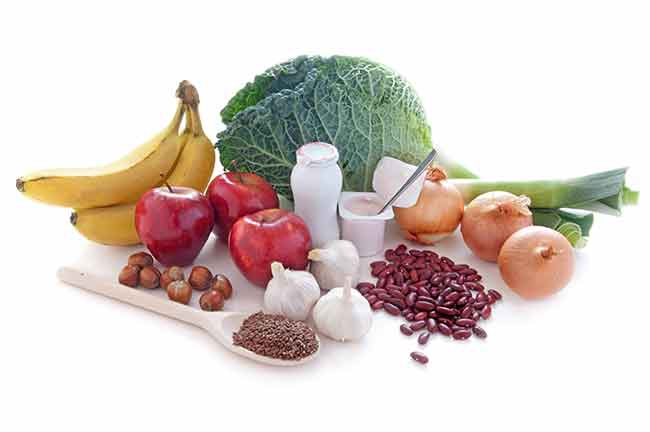
Final Proof: Why prebiotics?
May 19, 2016
By
Jane Dummer
Gut health is one of the top trends for 2016, and researchers are taking a closer look at what role prebiotics play in your internal system.
 Photo: Fotolia
Photo: FotoliaConsumer interest in digestive health continues to grow and is one of the top health trends this year. Consequently, gut health was a popular topic at the American Society for Nutrition Scientific Sessions at the Experimental Biology 2016 conference in San Diego in April.
We hear a lot about probiotics, which are the good bacteria found in foods like yogurt and sauerkraut that promote digestive and immune health. Along with probiotics, prebiotic foods and ingredients are receiving more attention from researchers, health professionals, and media. Prebiotic foods contain non-digestible ingredients and, when consumed, provide a beneficial environment in the gut for good bacteria, including probiotics, to thrive.
The most common prebiotics in our diets are forms of dietary fibres found in fruits, vegetables, pulses, nuts, seeds and whole grains. These fibres resist digestion in the small intestine and reach the large intestine (colon) where the majority of the gut ecosystem (known as the microbiota) exists. When dietary fibres as well as resistant starch and polyphenols (micronutrients) in the diet resist digestion in the small intestine and reach the colon, they become available for use by the microbiota to promote good bacteria and suppress the growth of bad bacteria.
Only recently have researchers begun to identify the particular role of prebiotic-type fibres, their components and their health benefits. Studies have shown the potential prebiotic activity of whole oats and barley due to their high levels of soluble fibre beta-glucans. Alison Duncan, a dietitian and professor in the department of human health and nutritional sciences at the University of Guelph who researches pulses, says, “Pulses are not only packed with nutrition, but they can also promote the growth of healthy bacteria with their prebiotic properties. In fact, a recent 2012 study in Molecular Nutrition and Food Research demonstrated the ability of a chickpea and lentil flour to increase growth of healthy bacteria to promote gastrointestinal health.”
At Experimental Biology 2016, Shannon Lloyd, a graduate student and researcher at Texas A&M University, presented a study that identified the prebiotic potential of polyphenols found in sorghum bran. Lloyd explained: “The diet can alter and change the gut microbiota. In this animal study, we found there were beneficial changes in the microbiota due [to] the consumption of sorghum bran containing different types of polyphenolic compounds. Further, it was identified these changes may help protect against the development of inflammation and chronic diseases such as obesity and Type 2 diabetes.”
Research conducted by Lloyd and the team at Texas A&M University is a good benchmark for the next step of designing and completing further clinical studies with human populations. We still need to understand the recommended prebiotic dosage for individuals. This will depend on a number of variables, including the type of prebiotic, the health condition in question and the existing microbiota in the gut. Also, other characteristics such as solubility, fermentability, and viscosity are important determinants of the effect the prebiotic compounds will have in the body.
When formulating products with fibre, bakers have to balance the following parameters: regulatory requirements, composition, production process and cost/availability of ingredients. For a successful, great tasting formulation, bakers often use a combination of fibres. In the baking industry, we are very familiar with a common prebiotic known as inulin, found in chicory root and other plants containing fructo-oligosaccharides (FOS). Over the past five years, there has been a trend towards using a variety of fibre blends from whole grains, pulses, nuts, seeds, fruits and vegetables in breads and sweet goods. The variety and range of prebiotic compounds are providing a number of options to bakers. This is particularly important when responding to customers who can better tolerate one prebiotic over another.
People continue be very interested in developing dietary regimes to promote gut health. The gut ecosystem/microbiota is individual to each person, however there are general diet guidelines to encourage a healthy environment. Eating a variety of nutritious foods with fibre is my top recommendation to promote digestive health. And research suggests prebiotic-rich foods are an essential factor to achieve optimal gut health. As we gain a better understanding of dose-response of prebiotic foods, there is an excellent opportunity for bakers to develop new products with an assortment of prebiotic ingredients for their consumers seeking health and wellness.
Jane Dummer, RD (www.janedummer.com), known as the Pod to Plate Food Consultant, collaborates and partners with the food and nutrition industry across North America.
Print this page
Leave a Reply